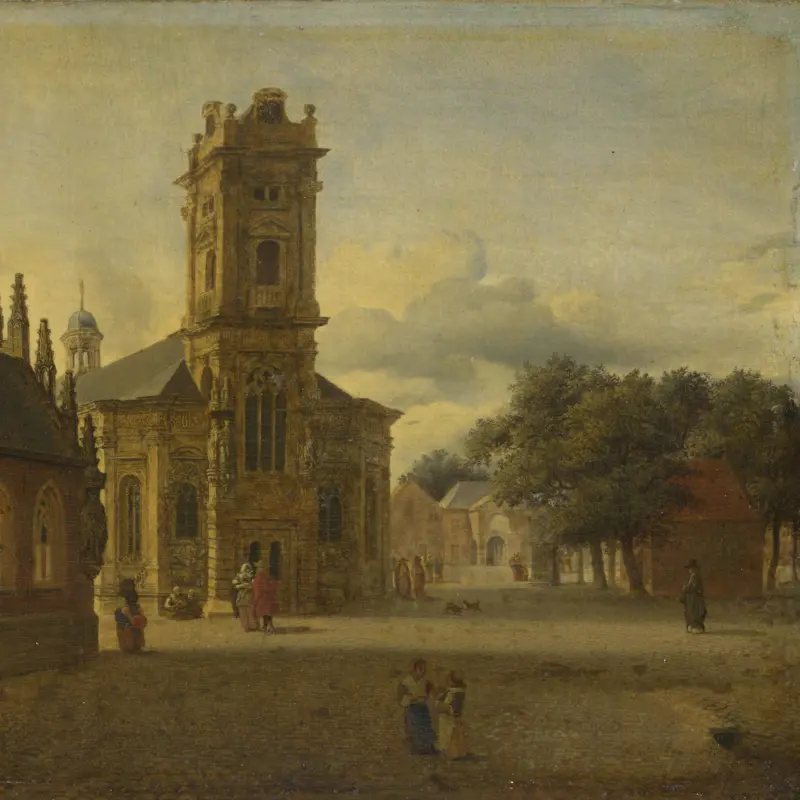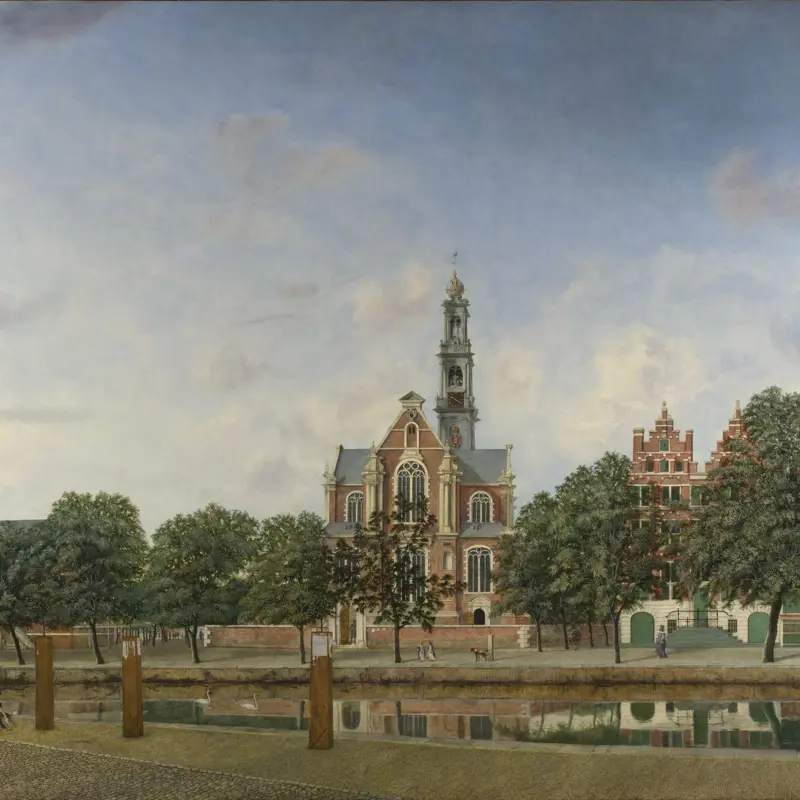Jan van der Heyden, 'The Huis ten Bosch at The Hague', 1665-75
About the work
Overview
This is a view of the south-east front of the Huis ten Bosch (‘House in the Wood’), which was built just outside The Hague as a summer palace for the wife of the head of state of the Netherlands. The building is shown in its original state, a decade or so after it was finished. Today it is used by the Dutch Royal Family as an official residence, though it has been substantially altered and extended.
What is distinctive about this painting is the way that van der Heyden creates a remarkably powerful illusion of depth in a highly compressed space: dark green horizontals are crossed by white pot stands, statues and obelisks, and combined with figures of diminishing size. These straight lines are countered by the strong curves of the topiary hedge in the foreground, which are reflected by the trees to the side of the house.
Key facts
Details
- Full title
- The Huis ten Bosch at The Hague
- Artist
- Jan van der Heyden
- Artist dates
- 1637 - 1712
- Date made
- 1665-75
- Medium and support
- Oil on wood (probably oak)
- Dimensions
- 21.6 × 28.6 cm
- Inscription summary
- Signed
- Acquisition credit
- Bequeathed by Sir James Morse Carmichael, Bt, 1902
- Inventory number
- NG1914
- Location
- Room 16
- Collection
- Main Collection
- Previous owners
- Frame
- 17th-century French Frame
Provenance
Additional information
Text extracted from the ‘Provenance’ section of the catalogue entry in Neil MacLaren, revised and expanded by Christopher Brown, ‘National Gallery Catalogues: The Dutch School: 1600–1900’, London 1991; for further information, see the full catalogue entry.
Bibliography
-
1960Maclaren, Neil, National Gallery Catalogues: The Dutch School, 2 vols, London 1960
-
1991Maclaren, Neil, revised by Christopher Brown, National Gallery Catalogues: The Dutch School, 1600-1900, 2nd edn (revised and expanded), 2 vols, London 1991
-
2001
C. Baker and T. Henry, The National Gallery: Complete Illustrated Catalogue, London 2001
About this record
If you know more about this work or have spotted an error, please contact us. Please note that exhibition histories are listed from 2009 onwards. Bibliographies may not be complete; more comprehensive information is available in the National Gallery Library.






